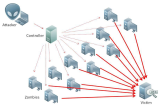
The Commission today adopted its proposal for fishing opportunities for 2022 for the Baltic Sea. Based on this proposal, EU countries will determine how much fish can be caught in the sea
basin, for what concerns the most important commercial species.
The Commission proposes to increase fishing opportunities for herring in the Gulf of Riga, whilst maintaining the current levels for sprat, plaice and by-catches of eastern cod. The Commission proposes to decrease fishing opportunities for the remaining stocks covered by the proposal, in order to improve the sustainability of those stocks and to help other stocks such as cod and herring recovering.
Virginijus Sinkevičius, Commissioner for Environment, Oceans and Fisheries, said: “The poor environmental status of the Baltic Sea is heavily affecting our local fishermen and women, who rely on healthy fish stocks for their livelihoods. This is why the Commission is doing its utmost to restore those stocks, and today's proposal is a reflection of that ambition. However, the state of the Baltic Sea is not only related to fishing, so everyone must do their part to build the long-term sustainability of this precious sea basin."
Over the past decade, EU's fishermen and women, industry and public authorities have made major efforts to rebuild fish stocks in the Baltic Sea. Where complete scientific advice was available, fishing opportunities had already been set in line with the principle of maximum sustainable yield (MSY) for seven out of eight stocks, covering 95% of fish landings in volume. However, in 2019 scientists discovered that the situation was worse than previously estimated. Decisive action is still necessary to restore all stocks and ensure that they grow to or remain at sustainable levels.
The proposed total allowable catches (TACs) are based on the best available peer-reviewed scientific advice from the International Council on the Exploration of the Seas (ICES) and follow the Baltic multiannual management plan adopted in 2016 by the European Parliament and the Council. As regards western Baltic cod, western Baltic herring and salmon, the Commission will update its proposal once the relevant scientific advice will be available (expected by mid-September).
Cod
For eastern Baltic cod, the Commission proposes to maintain the TAC level and all the accompanying measures from the 2021 fishing opportunities. Despite the measures taken since 2019, when scientists first alarmed about the very poor status of the stock, the situation has not yet improved.
For western Baltic cod the scientific advice from the International Council on the Exploration of the Seas (ICES) is postponed to mid-September, and the Commission will update its proposal accordingly. However, since it seems unlikely that the stock has developed favourably, the Commission proposes already now to maintain the spawning closure. It also proposes to maintain all accompanying measures in the eastern part of the catch area, given the predominance of eastern Baltic cod in that area.
Herring
The stock size of western Baltic herring remains below safe biological limits and scientists advise for the fourth year in a row to stop catching western herring. The Commission, therefore, proposes to close the directed fishery and set a TAC limited to unavoidable by-catches, whose level the Commission will propose at a later stage, as ICES is currently not in a position to provide sufficient scientific data.
For central Baltic herring, the Commission proposes a reduction of 54% in line with the ICES advice, because the stock size has dropped very close to the limit below which the stock is not sustainable. In line with the ICES advice, the Commission proposes to decrease the TAC level for herring in the Gulf of Bothnia by 5%, while the situation for Riga herring allows for an increase of the TAC by 21%.
Plaice
While the ICES advice would allow for an increase, the Commission remains cautious, mainly to protect cod – which is an unavoidable by-catch in plaice fisheries as currently conducted. It therefore proposes to maintain the TAC level unchanged.
Sprat
Similarly to plaice, the ICES advice for sprat would allow for an increase. The Commission however advises prudence and proposes to maintain the TAC level unchanged. This is because sprat and herring are caught in mixed fisheries and the TAC for central Baltic herring has to be reduced again significantly. Moreover, sprat is a prey species for cod, which is not in a good condition.
Salmon
ICES has postponed its scientific advice for salmon to mid-September. The Commission will update its proposal accordingly. A special advice from ICES of April 2020 already provides information about the issues affecting these stocks, pointing to the fact that the MSY objective cannot be achieved for all salmon river stocks if the commercial and recreational mixed-stock sea fisheries are continued at current levels.
Next steps
The Council will examine the Commission's proposal in view of adopting it during a Ministerial meeting on 11-12 October.
Background
The fishing opportunities proposal is part of the European Union's approach to adjust the levels of fishing to long-term sustainability targets, called maximum sustainable yield (MSY), by 2020 as agreed by the Council and the European Parliament in the Common Fisheries Policy. The Commission's proposal is also in line with the policy intentions expressed in the Commission's Communication “Towards more sustainable fishing in the EU: state of play and orientations for 2021” and with the Multiannual Plan for the management of cod, herring and sprat in the Baltic Sea. Photo by YuJeen, Wikimedia commons.








































